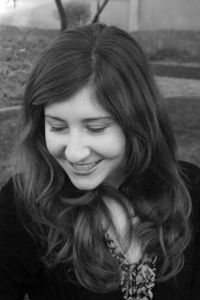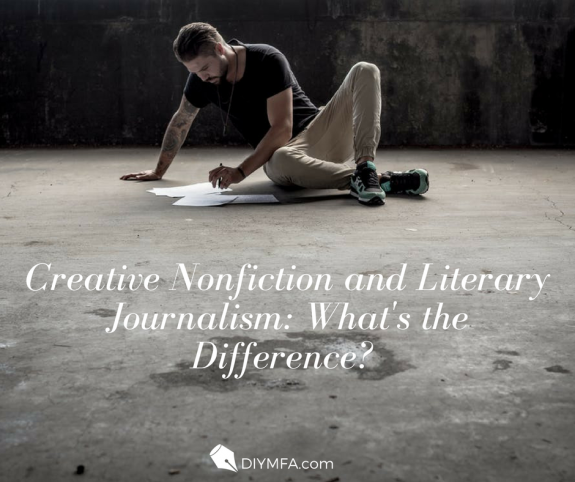When I was in high school, my AP English teacher had our class read essays from names like Annie Dillard, David Foster Wallace, and Virginia Woolf. Back then, I didn’t know who any of these people were. I fell in love with “Death of a Moth” when I had to write a one-page analysis of it back in the day, but it wasn’t until my last year of college that I really understood what these authors were doing: writing creative nonfiction.
Yes, I know. You’ve heard the term already. Everyone on the blogosphere seems to have something to say about it. All the articles you click on now almost always have a storied way of telling you basic information. Writing advice blogs mention the word here or there. And have you seen that Creative Nonfiction magazine at Barnes & Noble (i.e., one of THE DREAM magazines for our genre)?
This is the beginning of another endeavor: I’m going to explain creative nonfiction, its genres, and how you can write your own creative nonfiction essays in this new column.
Don’t try to tell me that you aren’t interesting enough. That you haven’t been to Venice yet, and you don’t think that at twenty-something years old you could possibly have enough life experience to write anything interesting. You don’t feel like enough of a person yet. I am all of the above. Your experiences are enough to figure out this whole writing-about-real-experiences thing. First stop? Let’s break down the difference between creative nonfiction and literary journalism.
What Creative Nonfiction Actually Means
Creative nonfiction was coined by Lee Gutkind in the ‘90s. Simply stated, it’s “true stories, well told.” At least, that’s the slogan for his magazine. Gutkind has written several books on the genre, like this one, which is incredibly helpful for getting started in the genre. But if you’re looking for a more precise definition, creative nonfiction is essentially a narrative that deals in factual events. Meaning that whatever you write about, whether in essays or long-form, must be based in reality.
But there’s also something unique about this genre: it’s extremely important that you tell a narrative that has a literary language about it. In other words, you want your prose to be compulsively readable because it’s real life told in a human voice that strays away from the technical or academic.
Some consider creative nonfiction to be an umbrella term for a genre that includes things like personal essays, memoir, travel writing, and literary journalism. You probably know what the first three are, but why is the last one different from creative nonfiction?
How Literary Journalism Fits In
Some people say there isn’t a difference. But here’s my take: literary journalism is often rooted in heavy research. For example, a biologist could write about the problems they see in an endangered population of turtles in the Pacific. A journalist could write about their experiences reporting in the Middle East, exposing a problem they encountered while in the field. Both of these are real examples. But they aren’t necessarily based on the storyteller’s life so much as the facts that they uncover on their journey. A writer can use figurative language to weave a narrative, but they can’t just engage in solipsism for 300 pages.
Not that creative nonfiction allows this. However, there’s a bit more freedom in the way that a writer can arrange facts. Some writers have even gotten in trouble when readers discovered they hadn’t told the story exactly as it had happened. You don’t want to stir up controversy, but there is a freedom in how you collapse or expand events. You can even re-order them to fit a narrative arc.
How to Pick the Right Non-Fiction Genres
Some writers object to writing this way. You may even find that there are two different camps of writers who completely disagree with one another’s prose. This may seem divisive. But there may be another option.
Literary nonfiction is another term I’ve seen thrown around, but not as often as the first two. It usually operates as a blanket term for both creative nonfiction and literary journalism. This one combines the essence of both into a style that works in many contexts. For a literary nonfiction piece, you’d do a bit more research than for a piece that is creative nonfiction. The latter form does allow you to simply write about your life. You may fact check dates or places, but many writers of creative nonfiction write things as they remember them. Implicit in some writing is even a type of subjectivity because the experiences are so personal that they’re more difficult to really verify.
Maybe this feels a little confusing. But if you’re looking to write about your own life, you’ll likely fall in the creative nonfiction camp. If you want some great essays to read on just about anything, check out online publications like Ecotone, Longreads, Literary Hub, or The Millions. These are great places to start if you want to read some creative nonfiction ASAP. And, if you’re a personal essay person, check out these tips from The New York Times on writing great creative nonfiction.
Those essays you read in high school English class can be a great start for your first foray into creative nonfiction, but they’re just the beginning. The realm of nonfiction may feel intimidating, especially if you’re not sure you have a shocking tale to put into a memoir just yet. That’s the great thing about creative nonfiction: you really can write about just about anything. The best part? No sensationalism required.
 Kayla Dean is an arts and entertainment writer in Las Vegas, where she has interviewed several celebrities for publications like Vegas Seven. She has several YA stories in the works and blogs about writing and creativity on her personal website, where she also hosts the Millennial Writer Series. She received her BA in English from the University of Nevada, Las Vegas and will pursue her Master’s in English Literature this fall. You can find her on Twitter@kayladeanwrites.
Kayla Dean is an arts and entertainment writer in Las Vegas, where she has interviewed several celebrities for publications like Vegas Seven. She has several YA stories in the works and blogs about writing and creativity on her personal website, where she also hosts the Millennial Writer Series. She received her BA in English from the University of Nevada, Las Vegas and will pursue her Master’s in English Literature this fall. You can find her on Twitter@kayladeanwrites.







